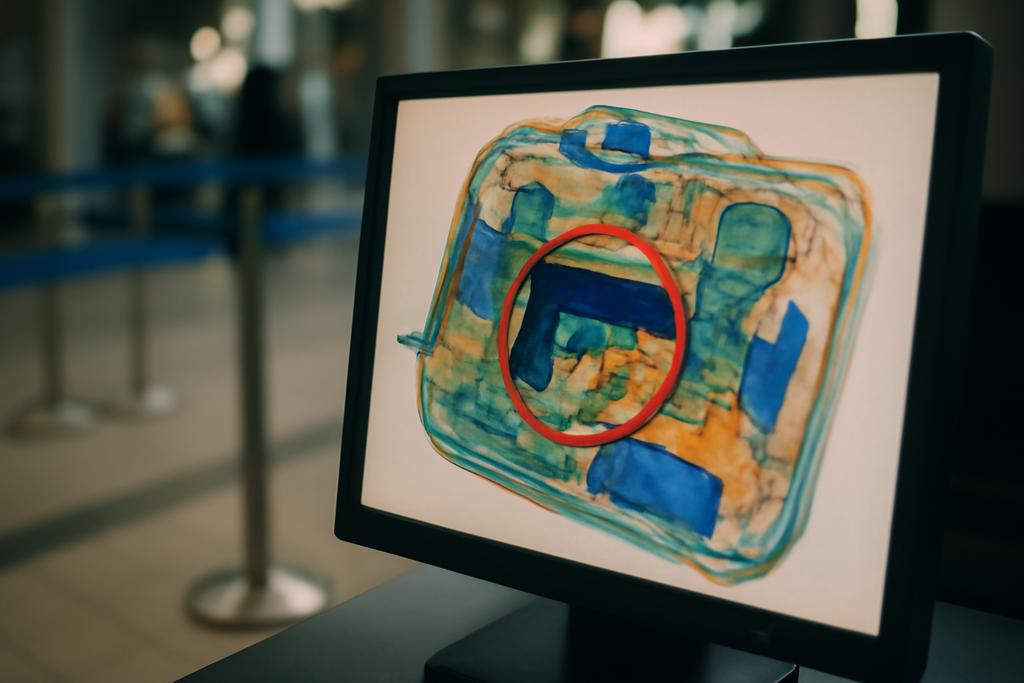The X-Ray Vision of AI
Imagine a world where airport security is faster, more accurate, and less reliant on human error. That’s the promise of automated X-ray baggage screening, a technology that’s rapidly evolving thanks to the power of artificial intelligence. Recent research from Harokopio University of Athens, led by Georgios Th. Papadopoulos and colleagues, shines a light on the current state-of-the-art, offering both excitement and a healthy dose of caution.
The Challenge of Seeing Through the Clutter
Analyzing X-ray scans of luggage isn’t as straightforward as it might seem. Think of a densely packed suitcase: objects overlap, creating a visual puzzle where a knife might be hidden behind a book, a gun obscured by clothes, or contraband cleverly concealed. Add to this the variability in X-ray scanners themselves—different machines produce images with different characteristics—and you have a formidable challenge for any AI system.
Deep Learning’s Entry
The researchers tackled this problem using deep learning, a subset of artificial intelligence inspired by the structure and function of the human brain. Deep learning models, particularly convolutional neural networks (CNNs) and the newer vision transformers, have proven adept at image recognition tasks. The researchers weren’t just building a single model, though; their study involved a comprehensive comparison of ten different state-of-the-art object detection methods, each with its own strengths and weaknesses.
A Six-Pack of Datasets
To truly test these AI systems, the researchers used six publicly available datasets, each with its own quirks. Some datasets emphasized the problem of object occlusion, others focused on the variability introduced by different X-ray scanners. This diverse selection of datasets allowed for a more thorough and realistic evaluation than typical studies, which often rely on a single or limited number of datasets.
The Good, the Bad, and the Unexpected
The results revealed some fascinating insights. While CNNs generally exhibited consistent performance, custom CNNs designed to specifically address X-ray challenges—like dealing with occlusion—surprisingly underperformed compared to their more general counterparts. This suggests that simply adding specialized modules doesn’t always guarantee improvement. In contrast, vision transformers—a relatively newer type of deep learning architecture—demonstrated impressive performance, especially in the most challenging datasets, suggesting their superior ability to handle complex visual scenes.
Hybrid models—combining the strengths of both CNNs and transformers—also performed well, especially in scenarios with significant object occlusion. This highlights the potential benefits of combining different deep learning architectures to create even more robust and accurate systems.
Beyond Accuracy: The Speed Factor
Accuracy is only part of the equation. For real-world airport security, speed is critical. The researchers also evaluated the time efficiency of these AI systems, finding that while transformers can be incredibly accurate, they’re often slower than CNNs. CNNs, particularly, can achieve near real-time performance, making them ideal candidates for immediate deployment in high-throughput settings.
The Human Element
While this study focuses on the AI, it implicitly highlights the limitations of human X-ray screeners. The repetitive nature of the work, the high stakes, and the potential for human error underscore the importance of developing robust automated solutions. This research offers a pathway toward more efficient and safer airport security procedures, but it’s crucial to remember that AI is a tool—a powerful one, but still a tool that needs human oversight and critical evaluation.
The Future of X-Ray Security
The study concludes with a call for more comprehensive datasets and further research into hybrid and custom architectures. While AI has made significant strides in automating X-ray baggage screening, there’s still room for improvement. The quest for faster, more accurate, and more robust AI-powered security systems continues, promising a safer future for air travel and other security-sensitive environments.










